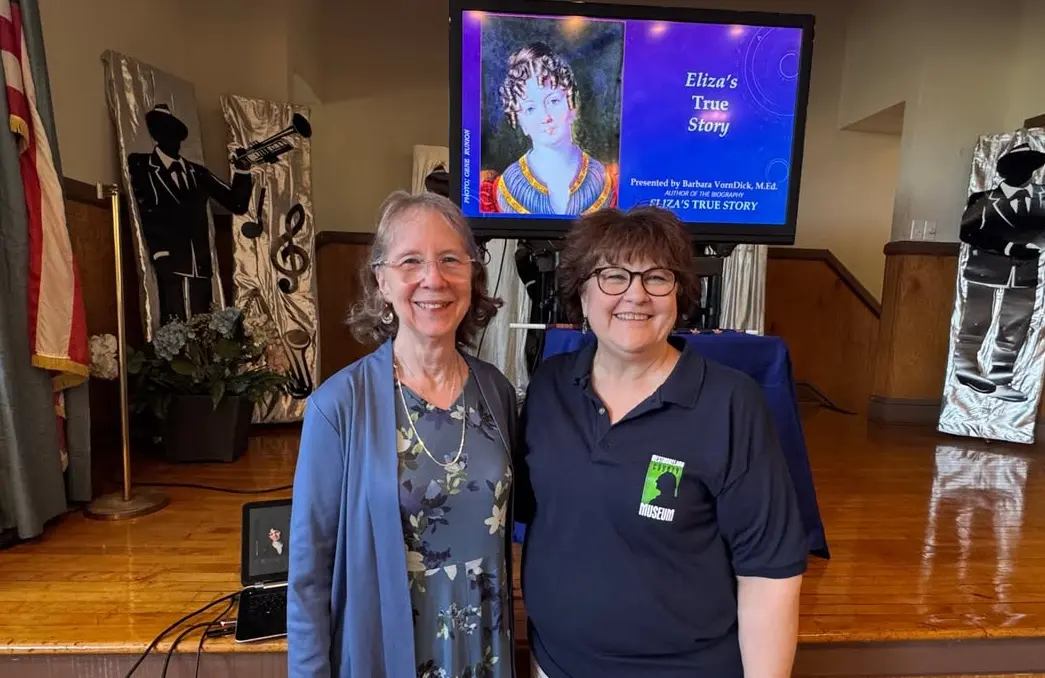Who was Eliza Monroe and what happened to her? President James Monroe’s daughter to be buried in Virginia after dying in France
-
 Historian Barbara VornDick, who initiated the Bringing Eliza Home Project (Image via Instagram/@westmorelandcountymuseum)
Historian Barbara VornDick, who initiated the Bringing Eliza Home Project (Image via Instagram/@westmorelandcountymuseum)Almost 200 years after her secluded death in a French city, Eliza Monroe Hay, the former president James Monroe's eldest daughter, will now be buried beside her father in Richmond, Virginia.
This reburial marks the completion of a lengthy and unfortunate expedition for a woman who once played a major role in early American political life, yet was overlooked for generations.
Eliza, who was born in 1786, was James and Elizabeth Monroe's first child. She was bright, feisty, and well educated, having spent part of her youth in France while her father was the United States minister there.
Most history books call Eliza Monroe Hay, daughter of the fifth president, arrogant and say she abandoned her family and country. She claimed she was swindled.
— The Washington Post (@washingtonpost) October 22, 2025
Now, thanks to a retired teacher, her remains are finally coming home to Virginia. https://t.co/r4exPQn8yk pic.twitter.com/o2R60YTJzWMrs. Monroe sent Eliza to a private boarding school, Madame Campan in Paris, where she met Hortense de Beauharnais, the future Queen of Holland and stepdaughter of Napoleon Bonaparte. The Monroes spent enough time in France for Eliza's perspective on the world to be shaped by cosmopolitan experiences.
When Eliza’s father took office as president in 1817, Eliza frequently assumed the responsibilities of First Lady due to her mother’s ill health. Eliza executed social events hosted by the White House with elegance and a European style, in stark contrast to the warm and cordial manner of the previous First Lady, Dolley Madison.
However, Eliza Monroe’s exclusive and non-intersecting nature was subjected to criticism by many who characterized her as arrogant, a characterization modern historians, including Barbara VornDick, challenge.
In Eliza’s True Story: The First Biography of President Monroe’s Eldest Daughter, Barbara VornDick presents Eliza as a proficient and devoted woman, bearing tremendous family responsibilities.
Eliza cared for her sick parents, husband (George Hay), and young grandchildren after her daughter’s death. She endured long experiences of hardships, illness, and financial difficulties.
More about Eliza Monroe's disputes with other family members and her death
Following the death of President Monroe in 1831, Eliza's legacy was embroiled in family controversies. Her brother-in-law and cousin, Samuel Gouverneur, who had control of Monroe's estate, supposedly denied her a portion.
Letters discovered almost two hundred years later show Eliza's state of despair as she reached out to friends for assistance, making the grave statement, "Save me from utter ruin. I am now in distress, in ill health, & in a foreign country."
Thomas Balch Library will host author Barbara VornDick in a discussion on “Eliza’s True Story: The First Biography of President Monroe’s Eldest Daughter” on Sunday, October 26, beginning at 2 p.m.
— Town of Leesburg, VA (@TownofLeesburg) October 16, 2025
Read more here >> https://t.co/qkAR52aO47#LeesburgVA pic.twitter.com/2NO8V7Ng3nIn 2018, French representatives contacted the James Monroe Museum, telling them the grave would be removed to make room for new burials; this resulted in historian Barbara VornDick initiating the Bringing Eliza Home Project, which, through both genealogical and diplomatic processes and procedures, resulted in the designation of Eliza's remains free for repatriation.
On October 23, 2025, Eliza Monroe Hay will be reinterred at Hollywood Cemetery in Richmond, Virginia, almost 200 years after her death, finally bringing her story back in line with her parents, who died before her.
TOPICS: Human Interest, Barbara VornDick, Elizabeth Monroe, Eliza Monroe, Eliza Monroe Hay, Hortense de Beauharnais, James Monroe, Eliza’s True Story: The First Biography of President Monroe’s Eldest Daughter
- What happened at Hazie's, San Francisco? Couple goes viral for irrate behaviour that leads them to being kicked out of the restro
- What happened to Sammie Mosier? HCA Healthcare and more pay tribute to beloved nurse following sudden death
- “This is a family tragedy”: Marjorie Taylor Greene urges empathy after Trump refers to Rob Reiner as ‘Tortured’ and ‘Struggling’ in condolence message
- Who was Anthony Geary? All about General Hospital star who died at 78